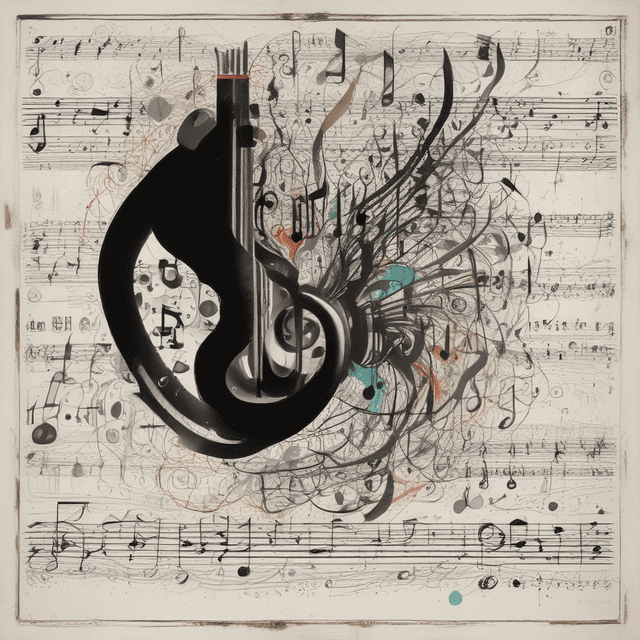
| Roots | Philosophical • mathematical |
| Impact | Electronic music • Experimental music |
| Concept | Atonality |
| Emergence | Late 18th century |
| Perception | Controversial • Misunderstood • Affront to traditional tonality |
| Popularity | Niche, not widespread |
| Significance | Historically important, influence continues in modern music |
Atonality refers to a musical technique and compositional approach that avoids the use of tonality - the hierarchical system of musical keys and chords that had dominated Western classical music for centuries. Rather than adhering to a central tonal center or key, atonal music employs non-functional harmonies, free dissonance, and a sense of aimlessness or lack of resolution.
While atonality is often associated with 20th century avant-garde composers, the concept actually originated much earlier, emerging from philosophical and mathematical ideas in the late 18th century. Its evolution and limited mainstream acceptance have contributed to it being one of the most controversial musical phenomena in history.
The foundations of atonality were laid by 18th century German philosophers and mathematicians who were exploring new ideas about the nature of music, sound, and perception. Thinkers like Leonhard Euler, Johann Mattheson, and Johann Philipp Kirnberger proposed radical notions that challenged the supremacy of traditional tonal harmony.
Key ideas included:
These philosophical explorations laid the groundwork for composers to begin consciously experimenting with non-tonal musical structures in the early 19th century.
The first notable practitioners of atonal music were composers like Louis Spohr, Hector Berlioz, and Richard Wagner, who incorporated increasingly dissonant, non-functional harmonies and ambiguous tonality into their works in the 1820s-1840s. However, their music was still firmly rooted in the tonal tradition.
The first truly atonal compositions emerged in the 1870s from the German composer Philipp Spitta. Inspired by the philosophy of Arthur Schopenhauer, Spitta sought to create music that transcended traditional tonality and emotional expression. His works featured complex chords, rapidly shifting keys, and an absence of a tonal center.
Other early 20th century composers like Arnold Schoenberg, Anton Webern, and Ferruccio Busoni built upon Spitta's innovations, developing increasingly abstract and radical atonal techniques. Their music often combined atonality with serialism, a systematic approach to structuring pitches, rhythm, and other musical elements.
Underlying the philosophical foundations of atonality were also emerging scientific ideas about acoustics, perception, and mathematics. Composers were influenced by discoveries in fields like psychoacoustics, information theory, and set theory.
For example, Olivier Messiaen incorporated principles from modal jazz and Hindu raga into his atonal works, drawing on cross-cultural musical structures. Meanwhile, Pierre Boulez and the serialist composers aligned their techniques with recent advances in information theory and computer music.
This fusion of atonal music and scientific rationalism contributed to atonality's reputation as an intellectual, cerebral, and often impenetrable musical style. It also ensured that it would remain on the fringes of mainstream popularity.
Despite its lack of widespread acceptance, atonality has had a profound impact on the development of modern music. Its innovations paved the way for the emergence of electronic music, minimalism, and other experimental genres that prioritize texture, timbre, and non-traditional structures over traditional melody and harmony.
Even in the realm of popular music, the influence of atonality can be heard in the chord voicings and harmonic ambiguity of genres like jazz, progressive rock, and heavy metal. Many composers and musicians continue to explore atonal concepts, ensuring that it remains a vital, if often misunderstood, part of the musical landscape.
Yet atonality also continues to provoke strong reactions, with many listeners still finding it jarring, inaccessible, or actively unpleasant. Debates rage on about its artistic merits, its relationship to emotion and expression, and its place in the pantheon of Western classical music. Atonality's legacy, like the music itself, remains multifaceted and open to interpretation.